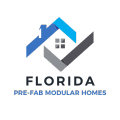In an era where environmental consciousness is on the rise, the housing industry is undergoing a transformative shift towards sustainable and eco-friendly solutions. Prefabricated or prefab homes have emerged as a frontrunner in this movement, offering an array of eco-friendly features and sustainable practices that not only benefit homeowners but also contribute to a greener planet.
1. Reduced Construction Waste
One of the significant ways prefab homes promote sustainability is by reducing construction waste. Unlike traditional construction, where excess materials often end up in landfills, prefab homes are manufactured in controlled factory environments where material usage is optimized. This results in significantly less waste during the building process, making prefab construction a more sustainable choice.
2. Energy Efficiency
Prefab homes are designed with energy efficiency in mind. They often incorporate advanced insulation, energy-efficient windows, and high-quality HVAC systems, which collectively contribute to lower energy consumption. This not only reduces utility bills for homeowners but also decreases the overall carbon footprint of the home.
3. Sustainable Materials
Many prefab home manufacturers prioritize the use of sustainable and renewable building materials. These materials include reclaimed wood, recycled steel, and eco-friendly insulation. By choosing sustainable materials, prefab homes help conserve natural resources and promote responsible sourcing in the construction industry.
4. Reduced Site Disturbance
Prefab construction typically requires less on-site labor and equipment compared to traditional building methods. This results in reduced site disturbance and a smaller environmental footprint. Homeowners can enjoy a more harmonious integration of their homes into the natural landscape.
5. Tighter Construction Timeline
The faster construction timeline of prefab homes also contributes to sustainability. Reduced construction time means fewer emissions from construction equipment, decreased energy usage, and a shorter period of disruption to the local environment.
6. Solar-Ready Designs
Many prefab home designs are solar-ready, meaning they can easily accommodate solar panels or other renewable energy systems. This proactive approach to green energy adoption allows homeowners to harness the power of the sun, further reducing their reliance on fossil fuels.
7. Water Efficiency
Prefab homes often feature water-efficient fixtures and appliances, helping homeowners conserve water and reduce their environmental impact. This is especially important in regions like Florida, where water conservation is crucial.
8. Longevity and Durability
Prefab homes are built to last, with a focus on durability and longevity. This means fewer resources are required for repairs and replacements over the years, making prefab homes a sustainable long-term investment.
9. Sustainable Landscaping
Prefab home construction can also incorporate sustainable landscaping practices, such as xeriscaping and the use of native plants. This reduces the need for excessive watering and chemical treatments, promoting a healthier local ecosystem.
In conclusion, prefab homes are at the forefront of green living and sustainable housing solutions. Their reduced construction waste, energy efficiency, use of sustainable materials, and overall eco-friendly design make them a compelling choice for environmentally conscious homeowners. As the demand for sustainable housing continues to grow, prefab homes stand as a testament to the positive impact that thoughtful and responsible construction practices can have on our planet and our quality of life. Choosing a prefab home isn’t just a choice for your own future; it’s a choice for the future of our planet.



